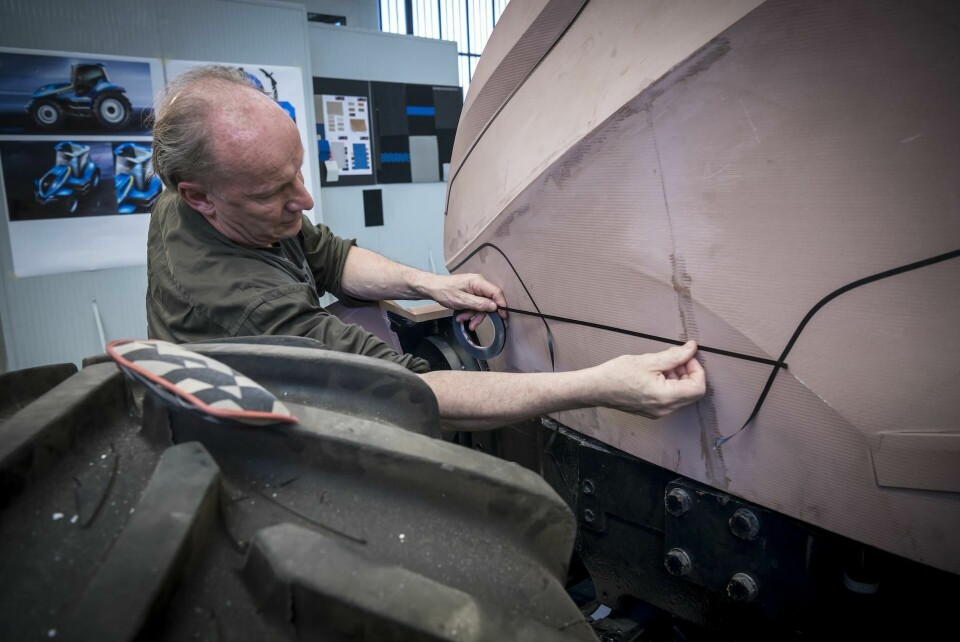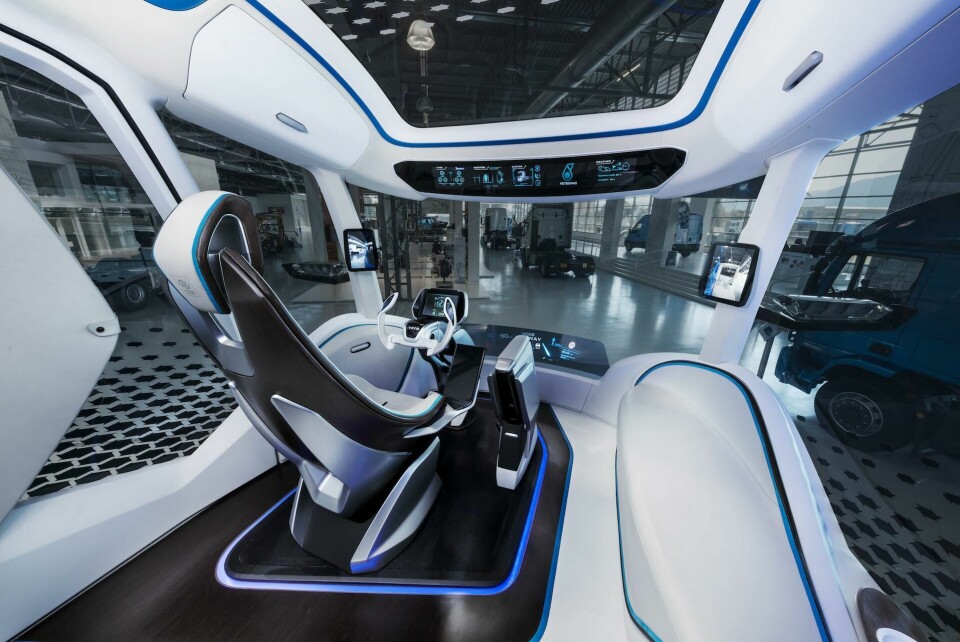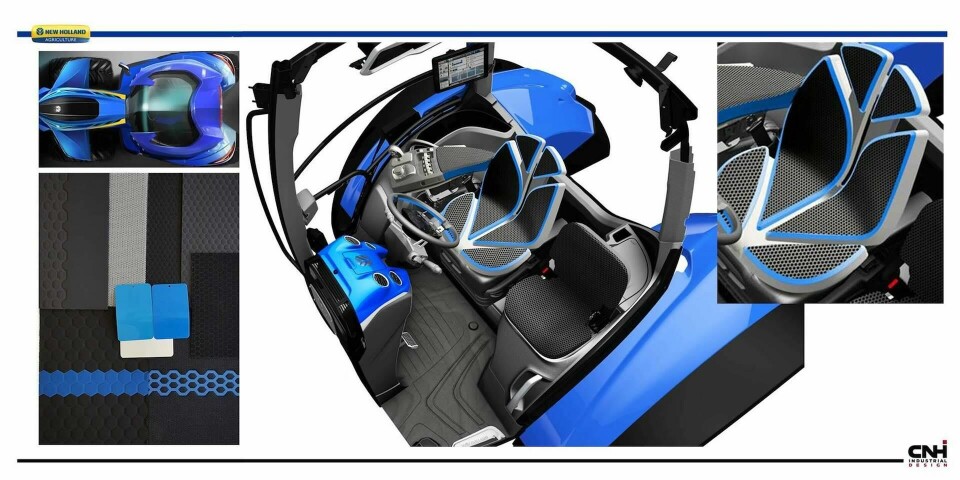
Car Design Review 5: David Wilkie, CNH Industrial
From the Car Design Review 5 yearbook: “I don’t see why industrial vehicles or machinery can’t look good”
Whereas every car designer drives – or gets driven – in a car, we have to be more cautious about thinking that we know it all. Not everyone knows how a grape harvester or combine harvester is used, for example; we go to a test centre near Paris, and we’ve got one in the US too, where we have a chance to drive excavators, skid-steers and big construction machines – it’s important for us to understand how people use them, and sometimes it’s quite a learning process when we go through a design project.
When I started here, I had some good experience in commercial vehicles, vans and trucks, but not in tractors and construction equipment – some of the machines we make, I’d never seen before – and I wondered what was going to happen, but so far, it’s just been so much fun.
My day-to-day business is identical to if we were doing car design, but we’ve got to take into consideration the technical requirements and functions, so we have to work very closely with our engineers and the product specialists. In that respect, we’re more like industrial designers than car stylists. I don’t think we need different skills – but I do think you need an open mind!

We try to question things, and if we can prove there’s a good reason why things should be different, then the brands we work for don’t have a big issue about changing them. Our main aim is to make things easy to live with – but also to make them look good.
I don’t see a reason why industrial vehicles or machinery can’t look good, it makes work more of a pleasure. But style has to give an advantage – mainly functionality, but it could also be simplicity in the build, reducing production costs, or improving quality. It’s more difficult to quantify in this industry, but if something looks better and it shows us as apart from our competitors, it’s worthwhile.
We cover 12 brands, so each one is very personal and has its own core values which we need to preserve and communicate. Let’s say that I design the ‘clothes’ or the skin that goes over the products, but we get deeper into the products and get involved with the core design and how this is built up. We need to reflect the quality of craftsmanship and of the products themselves, and then for each brand, it has to have a face; it has to be recognisable, we need to be coherent.

That’s very similar to designing cars: we just do different shapes and functions, and the huge changes that are happening in car design, technology and interiors are happening with us as well.
The interesting thing is that people who would use our tractors and trucks probably drive nice cars too – some of the tractors we sell cost more than a Ferrari! People like to be proud of their tractors, and if a farmer’s tractor costs more than his car, he’s going to expect that the quality is as good if not better.
We know that the quality of the functioning parts is really good, so my job is to make sure that the quality of the visual parts, of the interior of the cab, is equally good.

With interiors it’s not easy: we don’t build in the same numbers as the car industry, and we make many different types of products and vehicles in low volumes, which gives designers a huge challenge.
The testing on our materials is also more extreme than it would be for automotive, and this sometimes limits what you can actually use – our vehicles come under more rugged usage and have got to live a long time. But I believe we’ll see innovations, and a move towards more eco-friendly and natural materials. We’re also looking to see if we can do interior materials which would actually improve with wear, improve with age and have character, like a beat-up vintage guitar or leather jacket.
Farmers tend to be loyal to a brand – they’re quite traditional people – so the tractors have to link with heritage. I think this is interesting, how to design something that’s modern and for the future, but also won’t age, or that they would love to keep.

We’re lucky here in Turin because we’re right next-door to the FCA Centro Stile Fiat. At certain times we share resources and work together, so it’s a good situation to be in, and Turin as a place to work in design and as a city, is really great.
We’ve also got a design team in Chicago, a team in Modena and one in Lyon, France, as well as the one in Turin. They all have different cultural backgrounds; the areas where they live give them different perspectives. We’re quite mixed, ex-car designers and industrial designers with some people from agricultural specialists, and it gives us a fresh point of view. We let them be very free and creative so that they shock everybody at the first review, and then we’ve got to work out how far we can go to make things work and be sensible.
On the bigger projects like the trucks and tractors, where we’ve got more bodywork and you really want to put more sculpture in it, we get into clay modelling. Where I’ve got a chance, I like to make it physically to see what comes out. At the moment I’m working on some interiors for trucks and buses, and we’re doing physical models because we want to see the environment, you’ve got to try it to see the real materials.

One thing in our sector is that we don’t always do ground-up new products – if you have a wheel-loader, a tractor or some construction equipment, it tends to be a case of continual improvements. That makes it quite difficult to break away and do a completely new design. What I’m trying to get into the system is asking in parallel, ‘what could happen if you could start from scratch from a blank sheet of paper?’ I’m questioning why a tractor is the way it is. It’s a conservative world that’s difficult to shake up, but we’ve been doing a bit of that in our concept work.
It’s an interesting business, it’s a bit like going on a trip and it’s not so much about the arriving – I just like the process of it all. I still have a lot of fun doing it; I even draw at night sometimes.

his interview is from our Car Design Review 5, a beautifully-produced 200-page book published this Spring and containing the past year’s finest concept and production cars, plus trend reports, an in-depth feature on our lifetime achievement award winner, industry legend Wayne Cherry, and interviews with many of the world’s foremost designers. If you’d like more details or the chance to purchase your own copy, go here.




